“We are holding up someone who prides gentleness as being one of the greatest human qualities”: Woman Walks Ahead director Susanna White on subverting the mindless violence of the Western
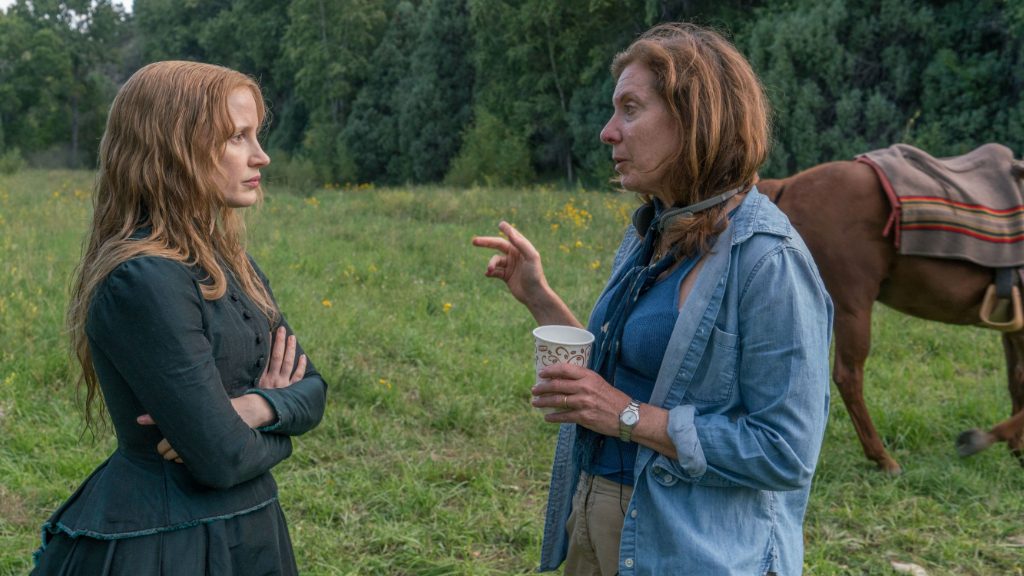
Woman Walks Ahead, the beguiling tale of Catherine Weldon (Jessica Chastain), a Swiss-American portrait painter who travels to the Dakotas during the 1880s to protect the land of Native American tribes – headed by their leader, Sitting Bull (Michael Greyeyes) – from being exploited by white American supremacists, is a mesmerising work of art. Challenging the Western trope and its connotations, the feature documents Weldon’s plight as she campaigns for social and political justice of the Lakota people whilst facing bigotry and contempt along the way.
We had the pleasure of speaking with the film’s director, double Primetime Emmy nominee Susanna White, to learn some more about the movie’s inception, its historical poignancy and its message to aspiring female directors wishing to break into the industry today.
Hi Susanna, thanks for taking the time to speak with us, and congratulations on a wonderful and emotionally gripping film. I was incredibly moved by Catherine Weldon’s story, this courageous and tenacious figure, who, despite living in such a politically turbulent time in history when women did not even have the right to vote, set out westward to fight for human rights. What compelled you to tell her narrative?
Like many women, she was an extraordinary individual. Unfortunately, like many extraordinary women, she had been reduced to what was literally a footnote in the history books. We had found her story as a footnote in the biography of Sitting Bull, where she was known as “Sitting Bull’s white squaw”, which had been a headline in a local paper at Standing Rock. As Steven Knight, the writer, started doing more research, he found out that she was an extraordinary political activist who was way ahead of her time; I mean the bravery of someone doing that – going from New York to the Dakotas – at the time that she did, was such a powerful narrative. I think we have told a hugely important piece of American history, which people are not generally taught in history lessons, least of all the Native American community.
One of the most moving moments about making the film was when we showed it to a large group of Native Americans who drove – some of them up to seven hours – to attend the screening. At the end, someone stood up and said, “I just want to thank you for sharing our history, for it is not taught in our schools, and I think every Native American child should be shown this film.” I can’t tell you how heartfelt that event was; children were calling out, “Don’t let them take our land away” and people were joining in the war cries at political rallies. It’s so current, with regards to the Dakota pipeline protest, for example; basically, an oil pipeline was driven across where our important spiritual place was for the Lakota community, and people were protesting against it at the time we were shooting the film, so these are issues that are still very, very current and alive.
It has been a huge journey. Steven came across the story 16 years ago; I got involved with it about four years ago. It was hard to finance a film where the two leads were alienated Americans, and then, to be a woman… Luckily, once it got Jessica Chastain on board, it became more possible because, by levy, we are now at a place where people will go and see a film for having one of the world’s greatest actresses in it. It seems a mad thing to say, but in the past, it has been hard to finance a film about a woman, although, we had this amazing young financier, Erika Olde, who put up the budget for the film and so we managed to make it. We had a relatively small budget for that type of film, 12.5 million US dollars to be exact, and shot it in 31 days. The process was fast and furious. I wanted the lands to be one of the stars of the film, and so I made a virtue of big, empty expanses to tell this story of the lands in order to see whether any of us could truly own it.
The Lakota dialect, spoken by Sitting Bull and his entourage, has a large amount of precedence in the film. I believe you worked with your advisor, Yvonne Russo, and language consultant, Ben Black Bear, to carry out some of the background research. Could you take us through the experience of what it was like to work with them?
Yes. Well, my background is in making documentaries so my starting point is always to work with real people where I can. I was very aware of being an outsider – you know, Sitting Bull is such an important figure to that part of the community; he is one of its greatest spiritual leaders, and so I knew it was important for me to go out there and learn as much as I could about him because I had to get it right. I felt very in tune with telling the tale of a woman’s struggle, but it was the Lakota community I knew very little about, and so I wanted to engage with it as much as possible. Yvonne took me to meet her family on the Rosebud Reservation; I attended some ceremonies with them; I went and met the tribal elders; I went and engaged with a tribal council at Fort Yates, and I employed as many people from the community as I could to work with me on the film; for instance, I had an assistant called Willi White, who is a young Lakota filmmaker, and I learnt an awful lot from him.
One of the things that was really important to me was that Catherine needed to be our eyes and ears into that world, and we would have to like her as an outsider – I mean traditionally in Westerns everyone speaks English and the Native Americans are the bad guys. I wanted to turn those tropes on their head and portray the white people as being the outsiders here; this is land that these people had lived on for thousands of years, so quite deliberately the first time Catherine meets Sitting Bull, she is not able to understand anything he says, and so he must communicate with Chasca beforehand. We should feel how much of an outsider she is, so I worked with Ben Black Bear and with the actors; Michael Greyeyes is a Cree Indian, he was not a native Lakota speaker, and so he had to do a lot of work perfecting the dialect. Also, for other people like Sam Rockwell – he has that big scene in Lakota with Sitting Bull – it was really challenging for him, too. It was very important that the film be authentic, and that we feel like outsiders, to a certain degree, when watching it. I grew up loving Westerns and I love a lot of the conventions around how Westerns were shot, like the big wide cinemascope and the huge skies and massive landscapes.
Having shot the majority of the film on location, were there any meteorological challenges that you faced?
We shot the film in New Mexico for two reasons: firstly because we got a very good tax break which helped the budget go a bit further, and secondly, you can get incredible lighting in New Mexico; we got those amazing skies – it was a pretty good match to the Dakotas. However, there were cacti, which you do not have in the Dakotas, so one poor man’s job was digging up cacti. Also, we did get huge heat and dust storms, and for Jessica, who has very fair skin, we had to try and keep the sun off her as much as we could when we were outdoors for hours on end – sunscreen only lasts for so long. At the same time, Jessica wanted to embrace the fact that Catherine went out into the heat wearing her corset and long dresses. She was very un-Hollywood about it.
There are so many beautiful and memorable moments in the film, one of which takes place during the scene where Sitting Bull and Catherine go for a walk with the horses, and he says to her, “Your society values people by how much you have, ours by how much we give away.” It’s startling how true this statement rings in today’s day and age, especially with the rise of Trump, white supremacy rule, and the divide between wealth and poverty being the greatest it has ever been. This film feels timeless, but also relative in that respect. What are your thoughts on this? Was Woman Walks Ahead intended to be made at this particular point in time?
I’m glad you picked up that line because I love it. I told Steven that I loved the humour he gives Sitting Bull; he was supposedly an all-rounded human being, incredibly intelligent and funny, but above all, this amazing spiritual leader. That line is, in fact, a direct quote from Sitting Bull. I asked for Steven to put it into the film because it’s something he actually said, and I think it’s so powerful and resonant now. There is another line which did not quite fit into the film, but that I equally loved: “The greatest strength is in gentleness and the greatest gentleness is strength”. That stayed with me whilst I was shooting the film, and in some ways it became my mantra.
Traditionally, the Western is a genre of completely mindless violence, and I wanted to say, “Okay, here is a Western, but we are holding up someone who prides gentleness as being one of the greatest human qualities that you can possibly find, and he happens to be a world-famous Native American leader who we tend to know for being a warrior; this is what he said, this is the reality of what he said, but it is not how we know him in the West or how the West has chosen to depict him”. In a sense, he reminds me of Nelson Mandela, having put up with so much in his life, being imprisoned, and yet coming out the other end. He treated people fairly, he was not antagonistic, he preached the importance of people treating each other in a peaceful manner.
What was it like working with Jessica Chastain? Did you always have her in mind for Weldon’s role?
Yes, she was someone I had in mind right from the very beginning, just because she is such an extraordinary actress, and her luminosity with that pale skin, I thought that the idea of her going out into the West was a wonderful image; of course, as the project went on, there were parallels between how outspoken and brave Jessica was politically and how Catherine Weldon was too. Also, Jessica is a very generous collaborator; she was magnanimous in her approach when working with Michael Greyeyes and all the rest of the other actors.
As a female director taking on a Western genre, which in the world of cinema we have seen predominantly occupied by men, did you receive any doubts from the producers in the initial stages of the film? Additionally, what are your views about the opportunities that female filmmakers have nowadays? Do you feel they have broken the glass ceiling and begun to have their voices heard?
I did not encounter anything like that from the producers. Having seen that I had made Generation Kill, a series I directed for HBO about the American invasion of Iraq, they were not concerned about me taking on the genre, although I think my attitude to depicting violence was that I wanted people to feel the consequences of violence rather than necessarily see the acts of violence on screen. In terms of critical reactions to the film, I think one of the biggest challenges female filmmakers face is that a large amount of the critical community, who dictate which films break through, win awards and get distribution, are men. I did get some feedback saying the film was a bit sentimentalised and was not violent enough; people expected that type of genre film to be more visceral, but this was a very deliberate choice on my part for all the reasons I mentioned earlier about who Sitting Bull was.
I think if you look at this year’s BAFTA’s, there have been five films by women which have had no recognition, not one woman getting a nomination for the BAFTA, let alone a win. If you look at the statistics from Directors UK, it shows that there are far fewer women directing now than they were five years ago, so I think there is an appetite to change things – certainly within the television industry. It’s happening to a degree in feature films; very good people like Rose Garnett at BBC films, who is commissioning a lot of work by women. I think it will take time, it’s impossible to build a career overnight. I believe we need to get more female film critics; in fact, there are a bunch of people who call themselves “Female Film Critics”, and I am just hoping that the power of the internet has a democratising effect, that there are more voices out there being heard, and that word of mouth does count with audiences. If we can get films into cinemas, hopefully we can get people to go and see them. It’s not just about satisfying women who want to be film directors, it’s important for the whole of our society as a whole that what we show on our screens reflects the society we live in, that it’s an accurate portrayal of the world that we live in.
Women tend to employ other women in their crew, and it has a big ripple effect. If I’m looking at a boardroom table in one of my scenes, I am going to put lots of women around it. After The Hunger Games, there was a 40% increase in the number of young girls taking up archery; we know these films really affect people. If you show women in important roles, as politicians and as lawyers, a young girl will then see that example and aspire to follow in their footsteps. The same goes for having people of colour in films. I think it’s incredibly important, politically, that we have more women and more racial diversity in directors, because we set these big examples on the screen. It does influence people hugely, so it’s very important I think. For my next film, I’m writing my own project, based on my own life, after finally coming to the realisation that I want to put my own personal story out there.
George Fenton’s wonderful composition is really soulful and captivating; it definitely leaves its mark on the heart. What inspired you to work with him?
He has done some incredible scores, like Blue Planet and Gandhi, but it was all the work he did on Blue Planet, his empathy with nature, which sealed it for me. I wanted someone who understood the natural world and the power of the land. He really responded to the project when I first showed it to him; other people came in insisting that they were going to score it as a Western. George just saw an otherness in the film and responded to the story I wanted to tell of the land itself. I think he has done such an amazing job and has taken the film to another level. It was a joy working with him. He is an incredible man.
And lastly, I have to ask about Rico and his eloquent dancing. Was he trained for the purpose of this film or was he already a veteran?
He is based on a real horse that Sitting Bull was given, called Rico, when he was in Buffalo Bill’s circus (because Sitting Bull performed in Buffalo Bill’s circus) and Buffalo Bill gave him a horse which was trained to dance at the sound of a gunshot. I wanted a grey horse, like Rico was in the film, and I particularly wanted one that had a lot of character and spirit to it. We found a horse that looked right; the wranglers worked with this horse, which I think belonged to a family, and they taught him a lot of those moves. Then we found a double, so there was one horse that did the dancing at the end, which actually had somebody riding it beforehand so that it could perform a lot of those movements, and then we painted them out as CGI. We had another horse that Jessica and Michael rode, a slightly calmer one that was fine for the actors to safely use, so Rico had a double. They were real characters, and ultimately some of my favourite scenes to shoot.
Thank you so much, Susanna, for giving us your time. It has been lovely talking with you.
Ghazaleh Golpira
Woman Walks Ahead is holding its UK premiere on 22nd February 2019 at Picturehouse Central, before screening across the Picturehouse cinema chain on 26th February 2019.
Watch the trailer for Woman Walks Ahead here:

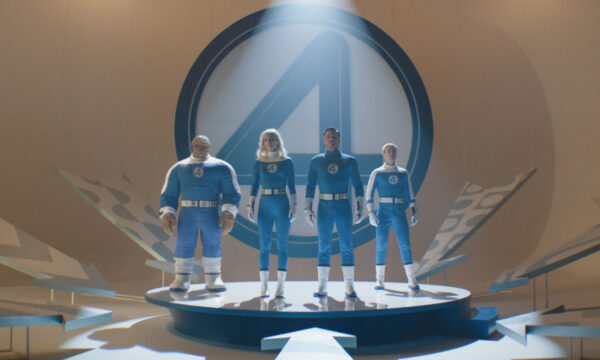
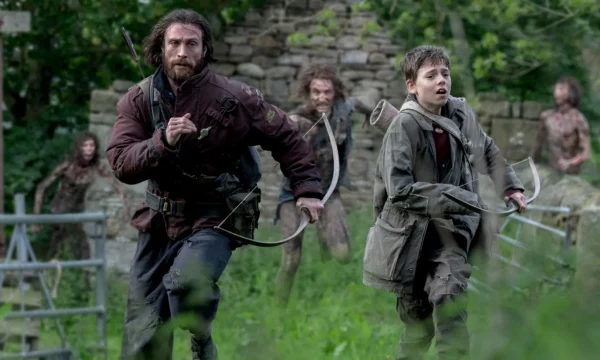
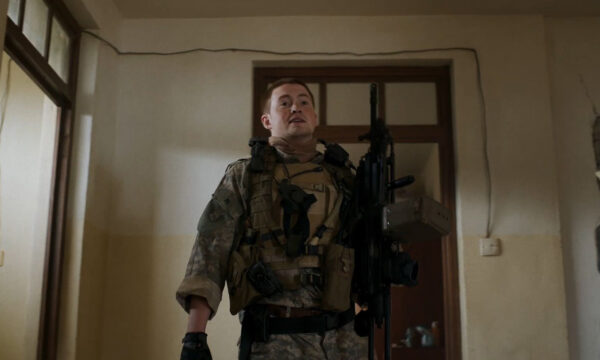
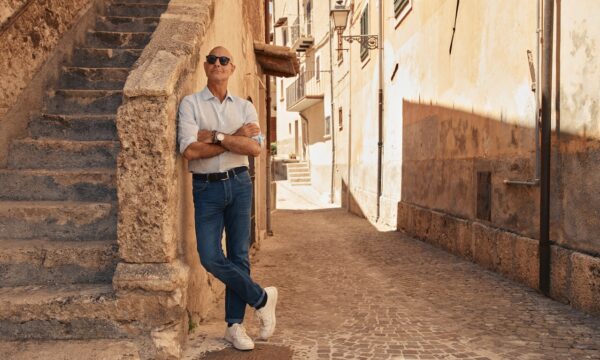
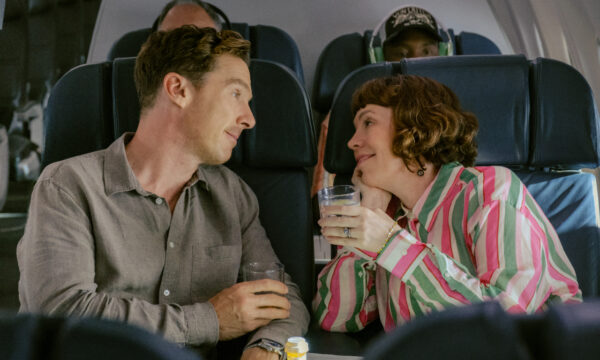
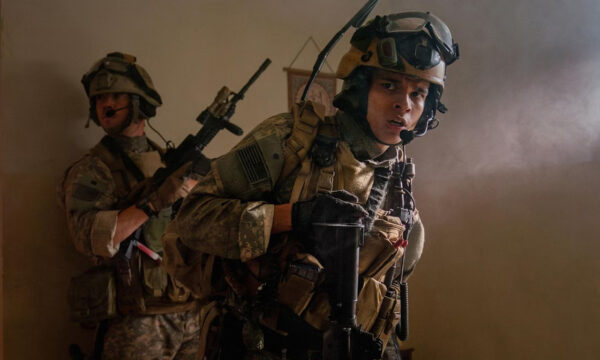
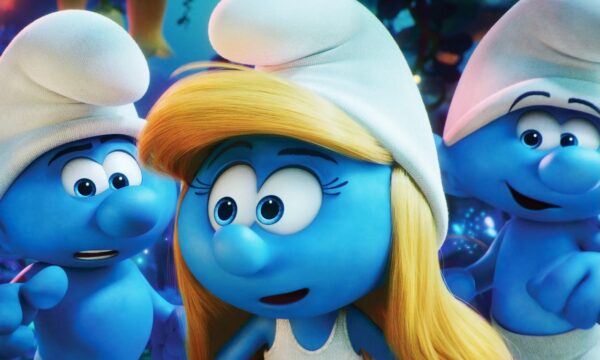
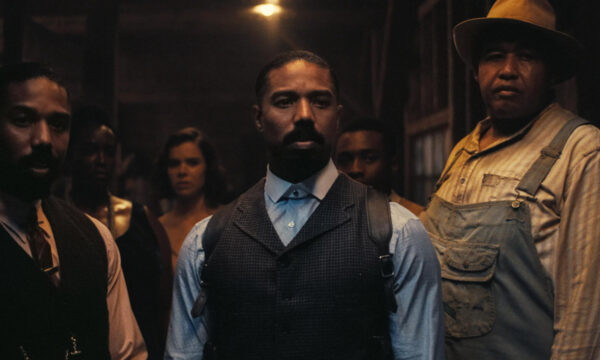
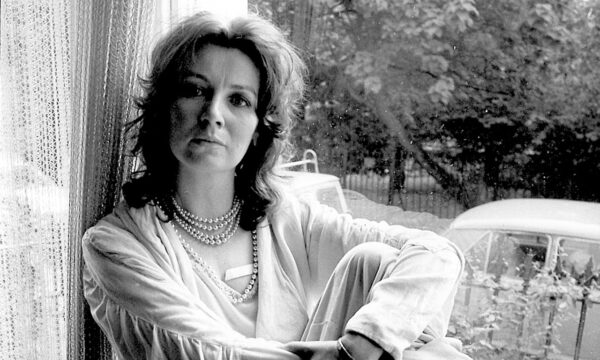














Facebook
Twitter
Instagram
YouTube
RSS